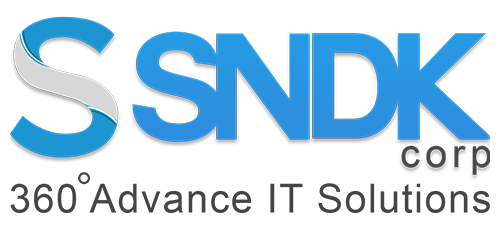Blog
Top Open-Source Cloud Platforms and Tools for Enterprises
In today’s transformational digital journey, the social, business, economic and technology trends play a significant part in developing the future of an enterprise. Cloud computing has become fundamental for many enterprises IT models; enterprise architects are trying to make cloud systems as efficient and beneficial as possible.
Open-Source Cloud Management
Open-source cloud is known as any cloud service or solution built using open-source software. This can include any public, private or hybrid cloud model implementing SaaS, IaaS, PaaS or XaaS built and operated solely on open-source technologies. Cloud management platforms are known as software suite with integrated tools to control cloud computing resources. The issues that users might face include conserving the usability, integrity and security of the data migrated online. The single solution to all the problems emerging from cloud-based implementations is an open-source cloud management platform.
Open-Source Cloud Management Solutions
The best open-source cloud management software platforms make it easier to manage cloud services and reduce overhead costs. This is mainly as cloud software has become an essential component in any business IT environment. It can manage and run applications through a SaaS model or set up your cloud architecture with an IaaS or PaaS platform. Managing many different services and providers can be difficult without the right cloud management software or services. Therefore, many cloud management solutions have become available. You can either manage cloud architecture directly or else bring in different cloud services under a single third party for easier management.
A cloud management platform is ideal if it has:
- Strong integration with IT infrastructure
- Automating manual tasks
- Service management
- Governance and security
List of Open-Source Cloud Platforms and Tools
1] OpenStack
OpenStack is used for cloud computing. It is used as an infrastructure as a service (Iaas). The software is meant to create private and public clouds. Users will be able to control compute, storage and networking resources throughout a data centre. This is operated from a dashboard or through OpenStack’s API. Backed by the most influential companies in software development and hosting, with thousands of individual community members, many think that OpenStack is the future of cloud computing.
Key Features
- Services: Messaging, containers, clustering, compute, identity, metadata indexing as service, events, workflows, DNS, bare-metal provisioning, governance, benchmarking, optimization and deployment
- Web front-end, Big Data processing framework, container orchestration engine and NFV orchestration.
2] Eucalyptus
Eucalyptus is open-source software for creating AWS-compatible private and hybrid clouds. It is also a Linux-based software architecture that performs scalable private and hybrid clouds within your IT infrastructure. It lets you use your collections of resources using a self-service interface whenever needed. As an infrastructure as a Service (IaaS), Eucalyptus also enables your users to provision your compute and storage resources on demand.
Key Features
- Works with various hypervisors.
- Communication within internal processes is guarded through SOAP and WS-Security.
- Administrative features like user and group management and reports.
3] OpenNebula
OpenNebula is a flexible turnkey open-source solution to create Private Clouds and maintain Data Center virtualisation. It implements IaaS. The first open-source version was released in March 2008. It is intended to be a simple but feature-rich customisable solution to manage enterprise clouds. It is also simple to install, update and operate by the administrators; and easy to use by end-users.
Key Features
- Supports APIs like AWS EC2 and OGF OCCI.
- It supports SSH and X.509 for security and even supports token login functionality.
- Powerful UNIX based CLI for administration.
4] Apache CloudStack
It is known to be a top-level project of the Apache Software Foundation. Apache CloudStack maintains networks of virtual machines as an Infrastructure as a Service (IaaS). CloudStack is a multi-hypervisor, high-availability cloud management platform. It is software that provides a cloud Orchestration layer, providing automation of the creation, provisioning and configuration of IaaS components.
Key Features
- Self-service user interface: AJAX console access, network virtualisation, multi-role support usage metering, virtual routers.
- LVM support: Block storage volumes, LDAP integration, OpenStack Swift integration, and domains and delegated administration.
5] VirtEngine
VirtEngine can be utilized to build private or public clouds supporting IaaS, PaaS and SaaS. It allows customers to make use of applications in a few clicks. VirtEngine has a lot of applications, and a simple user interface for you to self-serve your needs. VirtEngine by DET.io is open as two separate solutions for the public and private cloud. The Public Cloud lets users build their own cloud and present servers to customers. The Public Cloud is open as a minified edition and a complete solution. The private cloud is an open-source and free solution for enterprises supporting HA and more enterprise features.
Key Features
- Access control, cost management, multi-cloud management, one-click apps, demand and supply monitoring and automatic launch.
- DNS support, cloud-native, multi-locations, Docker containers, cloud virtual machines, self-healing and migration tools.
Conclusion
An open-source cloud platform is better than a proprietary cloud platform mainly because of the cost and the flexibility to choose from a variety of frameworks, clouds, and services. If you’re not satisfied with an open-source cloud platform today, you can go to another tomorrow. With the information given here, you will hopefully be able to choose the Platform that suits your needs. You won’t have to bother about issues like server capacity, middleware, frameworks, virtual machines etc.
Connect with SNDK Corp open-source experts for linux and open-source services.
FAQs
- The difficulty of use
- Compatibility issues
- Liabilities and warranties
- Hidden costs
One of the most common misconceptions about open-source software is that it is free of charge. “Free” means using source code for one’s purposes while crediting the software author. The software can be available at no cost and come with a monthly, yearly, or one-time payment.
- Flexibility
- Stability
- Security and reliability
- Easier evaluation
- Better support.
- Possible savings
